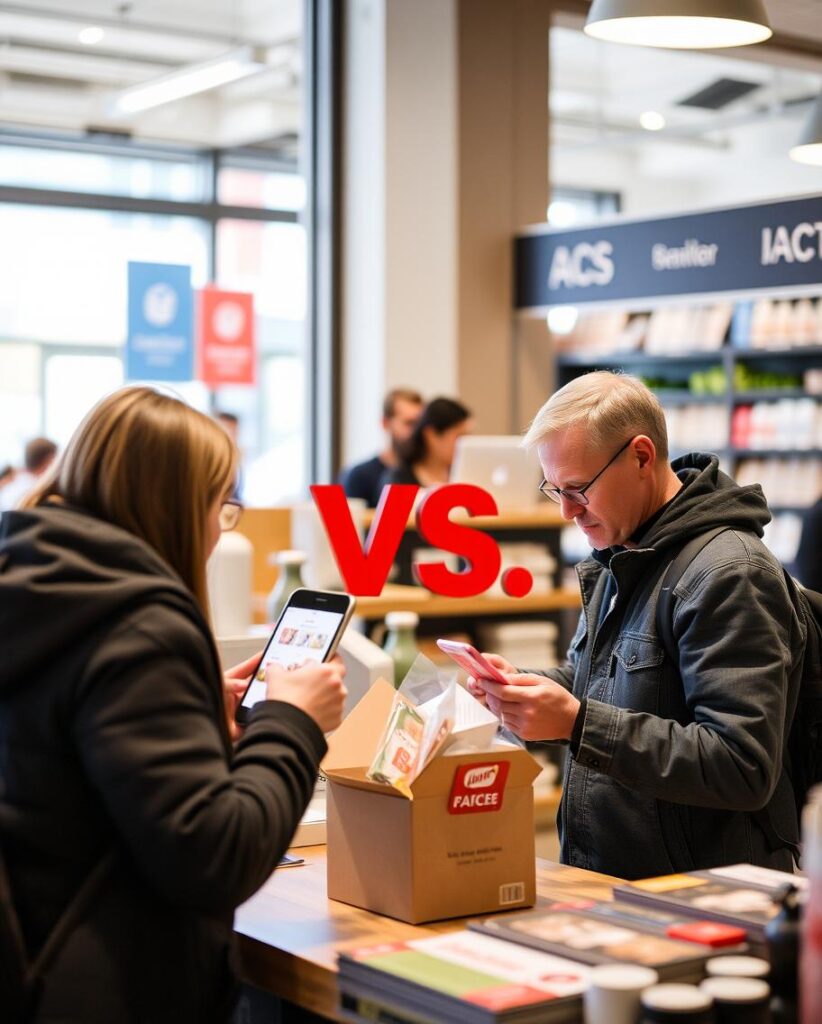Digital vs. Traditional Product Sampling: What Works Best Today?

In the world of marketing, product sampling has long been a powerful tool for driving consumer awareness and fostering brand loyalty. By allowing potential customers to try products before making a purchase, businesses can build trust, generate buzz, and increase sales. With the rise of digital technologies, traditional sampling methods have evolved, giving rise to digital sampling. In this article, we’ll explore the differences between digital and traditional sampling methods, discuss the benefits and challenges of each approach and how a product sampling agency in India can help you choose the most effective sampling technique for your business.
Traditional Sampling Methods
Traditional product sampling involves physically distributing product samples to consumers. This can be done in various ways:
- In-Store Sampling: This is one of the most common traditional methods, where samples are distributed within retail stores. Shoppers can try the product right where they shop, making it convenient and immediate. Brands often set up sampling stations staffed with representatives who can provide information and engage directly with consumers.
- Event Sampling: Companies often distribute samples at events such as trade shows, festivals, or sports games. This method leverages the high foot traffic and engaged audiences at these events. Event sampling provides a unique opportunity to create memorable experiences around the brand, often involving interactive booths or live demonstrations.
- Street Sampling: Brands may set up sampling stations in busy public areas like shopping malls, parks, or city centres, directly reaching consumers in their daily environments. Street teams can hand out samples, flyers, and promotional materials, engaging passersby and creating a buzz in high-traffic areas.
- Door-to-Door: Samples can be handed over directly to the consumers. This method can be highly targeted, based on demographic and geographic data. Door-to-Door sampling often includes additional promotional materials or coupons to encourage future purchases.
Advantages of Traditional Sampling
- Tangible Experience: Consumers can physically interact with the product, which can be particularly important for products that rely on sensory appeal, such as food, beverages, and cosmetics. The ability to taste, smell, or feel the product can significantly influence purchase decisions.
- Immediate Feedback: Brands can observe consumer reactions and gather feedback on the spot, allowing for immediate adjustments and improvements. This direct interaction provides valuable insights into consumer preferences and behaviours.
- Brand Presence: Physical sampling creates a strong brand presence in key locations, which can enhance brand recognition and recall. The visibility of sampling stations and the engagement of brand representatives can leave a lasting impression on consumers.
Challenges of Traditional Sampling
- Cost: Traditional sampling methods can be expensive due to logistics, staffing, and production costs. Organising and executing these campaigns requires substantial investment in materials, transportation, and personnel.
- Limited Reach: The reach is often confined to specific locations and times, limiting the overall exposure. Brands may struggle to reach a diverse audience across different regions or demographics.
- Waste: Physical samples can lead to waste, especially if they are not utilised effectively. Unsampled products, packaging materials, and promotional items can contribute to environmental concerns.

Digital Sampling Methods
Digital sampling leverages online platforms to distribute product samples. This method has gained popularity with the increasing use of digital technologies and the internet. Key digital sampling methods include:
- Online Campaigns: Brands can run campaigns on their websites or social media platforms where consumers sign up to receive samples. These campaigns can include engaging content, such as videos or interactive quizzes, to attract and retain consumer interest.
- Influencer Marketing: Collaborating with influencers to distribute samples to their followers can generate significant buzz and reach. Influencers can create authentic content showcasing the product, providing personal testimonials and encouraging their audience to try it.
- Subscription Boxes: Partnering with subscription box services allows brands to include samples in curated boxes sent to subscribers. This method targets a niche audience that is already interested in discovering new products, enhancing the likelihood of conversion.
- E-commerce Sampling: Including samples with online purchases encourages trial and cross-promotion. Customers who make a purchase receive additional samples, incentivizing them to try other products from the brand.
Advantages of Digital Sampling
- Wider Reach: Digital sampling can reach a global audience, breaking geographical barriers. Online platforms enable brands to target consumers across different regions, expanding their market presence.
- Targeted Distribution: With data analytics, brands can target specific demographics, ensuring samples reach the most relevant consumers. Personalised campaigns can be designed based on consumer preferences, behaviours, and past interactions.
- Cost-Effective: Digital methods can be more cost-effective, reducing the need for physical logistics and staffing. Online campaigns can be scaled up or down based on budget, providing flexibility in resource allocation.
- Data Collection: Digital campaigns facilitate collection of consumer data and feedback, providing valuable insights for future marketing strategies. Brands can track engagement metrics, monitor social media interactions, and gather detailed consumer profiles.
Challenges of Digital Sampling
- Intangible Experience: The lack of physical interaction can be a drawback for products that benefit from a sensory experience. Consumers may miss out on the tactile, visual, or olfactory elements that influence their perception of the product.
- Digital Literacy: Not all consumers are equally comfortable with digital platforms, potentially limiting reach among certain demographics. Older generations or those with limited internet access may be less likely to participate in digital sampling campaigns.
- Dependence on Technology: Digital sampling relies heavily on technology, which can be a hurdle if there are technical issues or low internet penetration in target areas. Brands must ensure their digital platforms are user-friendly and accessible to avoid alienating potential consumers.
Integrating Digital and Traditional Sampling
For a comprehensive sampling strategy, brands should consider integrating both digital and traditional methods. By leveraging the strengths of each approach, businesses can maximise their reach and impact. Here are a few ways to integrate both methods effectively:
- Event Sampling with Digital Follow-Up: Distribute samples at events and encourage recipients to share their experiences online or complete a digital survey. This integration enhances engagement and provides additional data for analysis.
- Online Campaigns with In-Store Redemptions: Run digital campaigns where consumers sign up for samples and redeem them at physical stores, driving foot traffic. This method bridges the gap between online and offline experiences, creating a seamless consumer journey.
- Influencer Sampling with Direct Mail: Collaborate with influencers to distribute digital coupons for sample requests, which are then fulfilled via direct mail. This approach combines the authenticity of influencer marketing with the tangibility of physical samples.
- Cross-Promotions: Include digital codes or QR codes in physical samples that direct consumers to online platforms for additional offers or information. This cross-promotion encourages further interaction with the brand and enhances the overall sampling experience.
Takeaway
Both digital and traditional sampling methods have their unique advantages and challenges. While traditional sampling provides a tangible, immediate experience, digital sampling offers wider reach and cost-effectiveness. By understanding and leveraging the strengths of each method, Sample Up helps brands create a robust sampling strategy that effectively drives consumer engagement and boosts sales. In today’s dynamic market, a product sampling agency can help choose a hybrid approach that combines the best of both worlds and could be the key to success. Brands that innovate and adapt to the evolving landscape of product sampling will be well-positioned to capture the attention and loyalty of consumers.